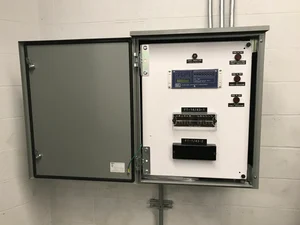Intro to Relays #1 - What are Relays, CTs & PTs?
Protective relays are a critical and complex part of electrical engineering, especially in the solar and energy storage industries. While they may seem intimidating at first, understanding the basics can make them much more approachable. This three-part series is designed to introduce non-engineers to the fundamental concepts of protective relaying.
**Intro to Relays #1 – What Are Relays, CTs, and PTs? (below on this page)**
**Intro to Relays #2 – ANSI/IEEE Relay Device Numbers**
**Intro to Relays #3 – What Does SEL Stand For?**
**What Is a Relay?**
In the context of solar and energy systems, a "relay" typically refers to a "protective relay." These devices monitor key parameters like voltage, current, and frequency in an electrical circuit. When something goes wrong—like an overcurrent or overvoltage—the relay sends a signal to open or close a switch, isolating the system and preventing damage.
Historically, relays were mechanical, but today’s modern relays are microprocessor-based, essentially small computers that can process data and make decisions in real time.

**Function of a Relay**
The main purpose of a relay is to protect the electrical system from damage by quickly removing faulty equipment. It does this in two ways:
1. **Prevent failure:** By detecting abnormal conditions early, relays can stop potential damage before it occurs.
2. **Mitigate effects:** If a fault happens, the relay helps limit its impact on the rest of the system.
Relays constantly monitor the electrical system, which could be a solar PV array, a building’s electrical infrastructure, or even the utility grid. For example, an overcurrent relay can detect excessive current on a feeder line and trigger a circuit breaker to cut off power before equipment is damaged.
Another example is a reverse power relay, which prevents electricity from flowing back into the grid beyond what the utility allows. This is especially important for solar systems connected to the grid.
An overvoltage relay protects inverters and transformers by shutting down the system if a voltage spike is detected, ensuring the safety of sensitive equipment.
**Attention Engineers!**
If you enjoy technical content like this, you might be a great fit for Pure Power. Our team of 80 engineers has designed over 2,000 C&I and utility-scale solar projects. Working with such a knowledgeable group is a fantastic way to grow your career. Check out our open positions and join us!
**How Is This Different From a Circuit Breaker or Fused Switch?**
While circuit breakers and fused switches can interrupt a circuit when current becomes too high, their functionality is limited to overcurrent protection. They don’t offer the same level of customization or monitoring as a relay.
Relays, on the other hand, are multi-functional and highly customizable. They can monitor voltage, current, frequency, and more. Each relay can be programmed differently depending on the system’s needs, making them ideal for complex solar and energy storage applications.
They also consist of separate components, such as current transformers (CTs) and potential transformers (PTs), which work together to provide accurate measurements.
**What Are CTs?**
CTs, or Current Transformers, are used to measure high currents in a circuit. Since the current in most systems is too high for a relay to handle directly, CTs step it down to a safer level. For example, a CT with an 800:5 ratio will reduce a current from 0–800 amps to 0–5 amps, making it suitable for relay input.
**What Are PTs?**
PTs, or Potential Transformers, perform a similar function for voltage. They step down high voltages to levels that a relay can safely measure. This is essential for protecting both the relay and the rest of the system from voltage surges.
**Switching Device**
A switching device, such as a circuit breaker or disconnect switch, is responsible for opening or closing the circuit. In utility-scale systems, this might be a vacuum circuit breaker or a recloser. In commercial systems, it could be a 480V or 208V circuit breaker with a shunt trip option.
**Conclusion**
At a high level, relaying seems simple, but the details can get quite complex. Fortunately, project managers and developers don’t need to understand every technical detail to succeed. That’s where experienced engineers come in. If you need help with relays on your next project, reach out to us today—we’re here to support you every step of the way.
Lamination Bopp Film Roll,Custom Bopp Plain Film,Lamination Film Bopp Film
Cangzhou Yunfeng Packaging Products Co., Ltd. , https://www.yunfengpackaging.com